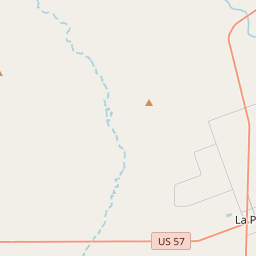Camp Nueces, C.S.A.
Historical marker location:






Founded April 1862 near this site, to guard vital traffic as it crossed the Nueces on the San Antonio Eagle Pass Road. A post of the Confederacy's frontier regiment, under Col. James M. Norris. Its duty was to see that cotton got through to Mexico and munitions, medicines and factory goods came north to supply the Confederacy. One of the chain of posts a day's horseback ride apart, on line from Red River to Rio Grande. Never able to relax, in constant danger of Indian raids; short of food, horses and guns, Nueces (like other frontier camps) had none of war's glory and more than its share of hardships.
? Located in Zavala County, created in 1858 and named for Lorenzo de Zavala. This is one of 10 counties to commemorate colonizers. Of the 254 counties, 42 have Indian, French or Spanish names. 12 honor Washington and other American patriots. 96 were named for 1836-1846 heroes of the Republic of Texas (including 15 who died in the Alamo). 23 have names of other early statesmen. 11 honor U.S. leaders in the campaign to annex Texas. 10 honor state jurists, ministers, educators, statesmen, historians. 36 are named for leading men of the southern Confederacy. 14 have names from local geography. (1983)
April 12, 1861: The Civil War begins with the Confederate attack on Fort Sumter, located in South Carolina's Charleston Harbor.
April 15, 1861: President Abraham Lincoln issues a call for 75,000 volunteers to serve in the Union Army to suppress the rebellion.
May 24, 1861: The first major land battle, known as the First Battle of Bull Run (or First Battle of Manassas), takes place in Virginia. It ends in Confederate victory.
September 17, 1862: The Battle of Antietam in Maryland becomes the bloodiest single-day battle in American history, with heavy casualties on both sides. The Union forces, commanded by General George McClellan, manage to halt Confederate General Robert E. Lee's advance into Union territory.
January 1, 1863: President Lincoln issues the Emancipation Proclamation, declaring that all slaves in Confederate-held territories are to be set free. However, the proclamation does not immediately free all slaves in the United States.
July 1-3, 1863: The Battle of Gettysburg in Pennsylvania takes place, resulting in a significant Union victory and inflicting heavy casualties on Confederate forces. It marks a turning point in the war.
November 19, 1863: President Lincoln delivers the Gettysburg Address, emphasizing the principles of liberty, equality, and the preservation of the Union.
April 9, 1865: General Robert E. Lee surrenders to Union General Ulysses S. Grant at Appomattox Court House in Virginia, effectively ending the Civil War.
April 14, 1865: President Lincoln is assassinated by John Wilkes Booth while attending a play at Ford's Theatre in Washington, D.C.
May 10, 1865: Confederate President Jefferson Davis is captured, signaling the collapse of the Confederate government.
December 6, 1865: The Thirteenth Amendment to the United States Constitution is ratified, officially abolishing slavery throughout the country.
While this timeline provides an overview of key events, it is important to note that the Civil War spanned over four years, from 1861 to 1865, and encompassed numerous battles, campaigns, and political developments that shaped the course of American history.
As one of the most visible programs of the Texas Historical Commission (THC), historical markers commemorate diverse topics in Texas history, including: the history and architecture of houses, commercial and public buildings, religious congregations, and military sites; events that changed the course of local and state history; and individuals who have made lasting contributions to the state, community organizations, and businesses.
The state of Texas was once an independent country known as the Republic of Texas. It gained independence from Mexico in 1836 and was a separate nation until it was annexed by the United States in 1845.
In the early 19th century, Spanish ranchers settled in the region, establishing large cattle ranches. With the signing of the Adams-Onis Treaty in 1821, Zavala County became part of the newly independent country of Mexico. The establishment of the Republic of Texas in 1836 brought an influx of American settlers to the area, seeking opportunities for farming and ranching.
The county was formally established in 1858 and named after Lorenzo de Zavala, an influential Mexican politician who had supported the Texas Revolution. However, it wasn't until the 1870s that the county experienced significant growth with the arrival of the railroad. The railroad brought increased commerce and connected the county to larger cities in the state.
With the discovery of oil and gas in the early 20th century, Zavala County experienced an economic boom. The oil industry brought jobs and prosperity to the region, attracting workers from across the country. Today, Zavala County remains an important hub for agriculture, oil, and gas production, preserving its rich history while continuing to evolve and adapt to the changing times.
Zavala County Timeline
This timeline provides a condensed summary of the historical journey of Zavala County, Texas.
- 1847 - Zavala County is officially established by the Texas legislature.
- 1853 - The county seat is designated as Batesville.
- 1858 - Batesville is abandoned as the county seat and moved to a new location called Uvalde.
- 1870 - Crystal City becomes the new county seat.
- 1944 - The town of La Pryor is established.
- 1952 - The railroad is extended to Crystal City, boosting the local economy.
- 1985 - The Mexican American Legal Defense and Educational Fund sues the county over voting rights, leading to the implementation of single-member districts.
- 2004 - The Zavala County Jail is closed due to inadequate conditions.
- 2017 - Hurricane Harvey causes significant damage to the county, leading to evacuations and recovery efforts.